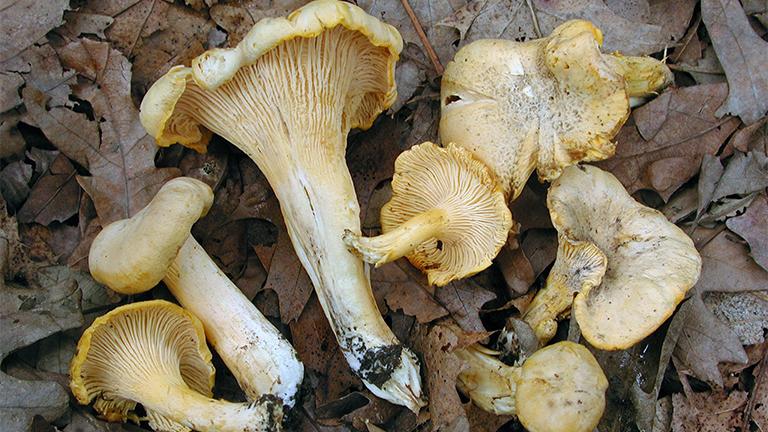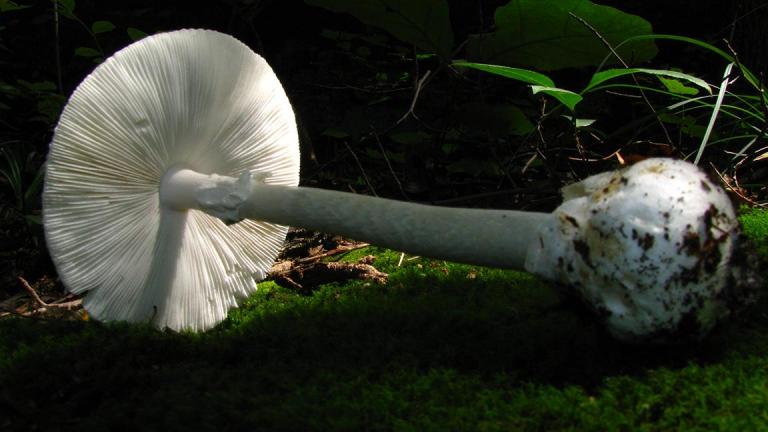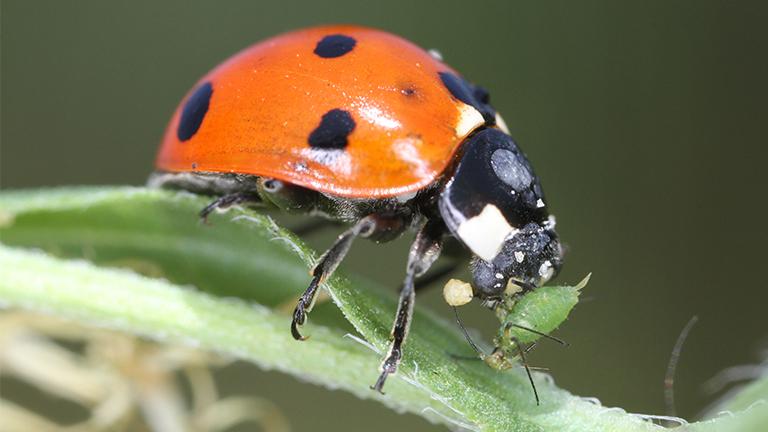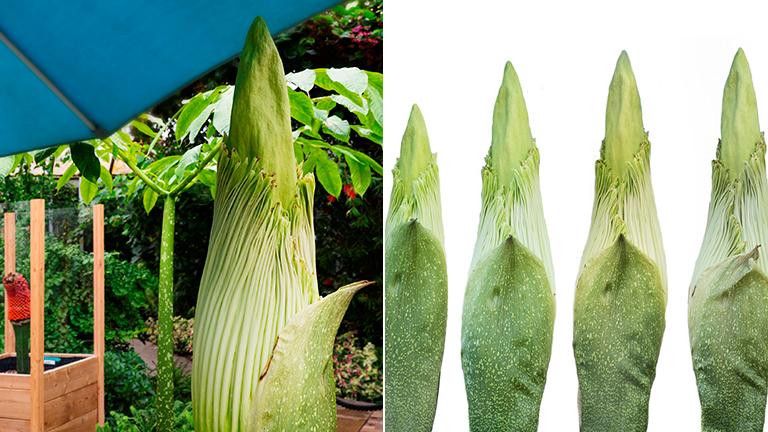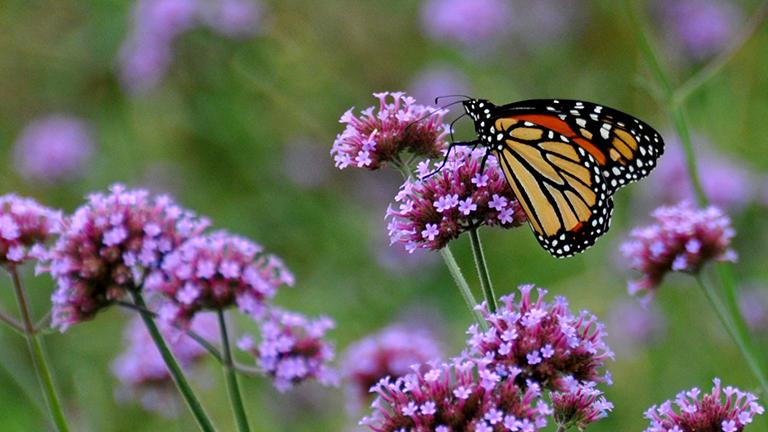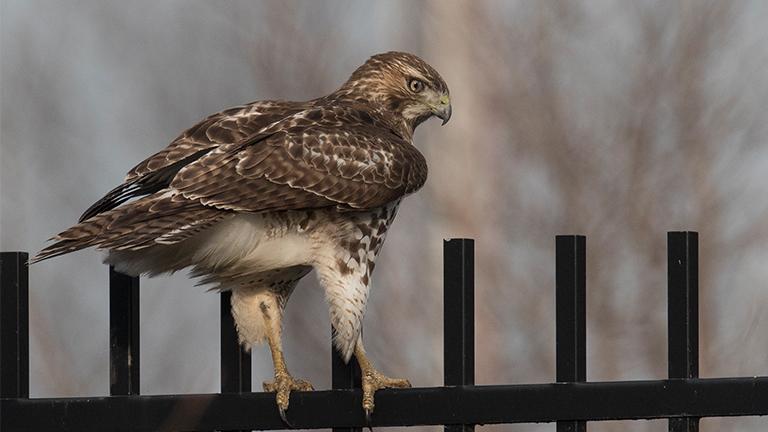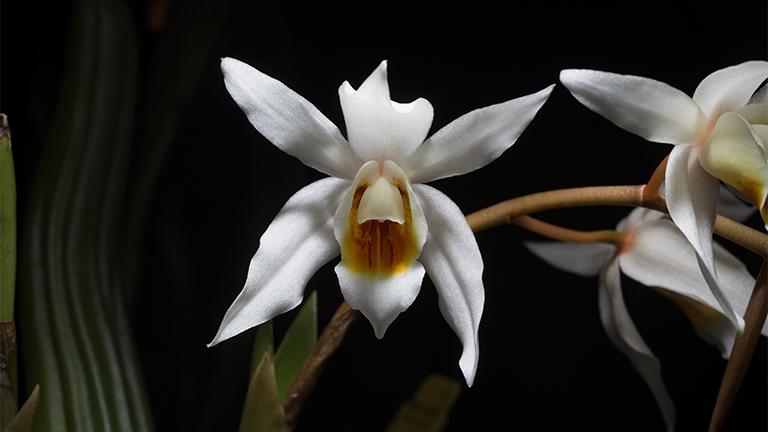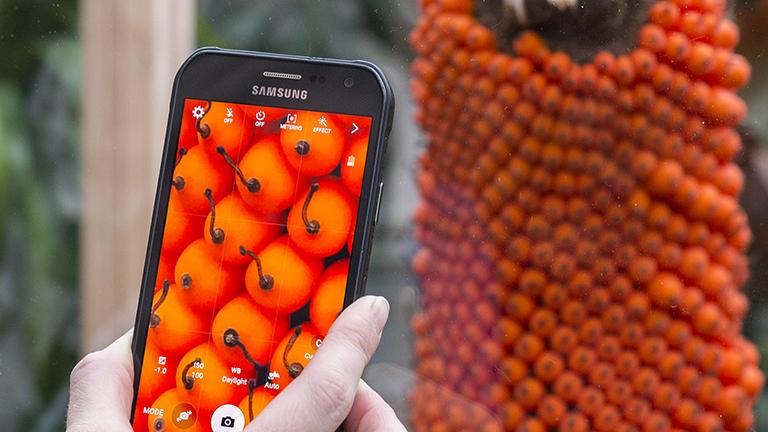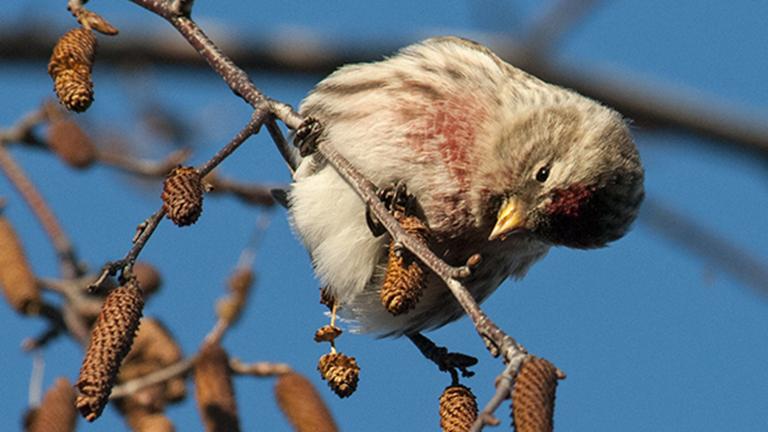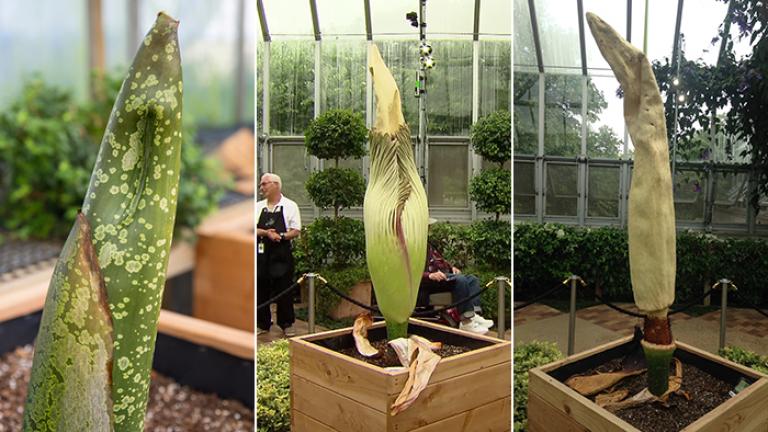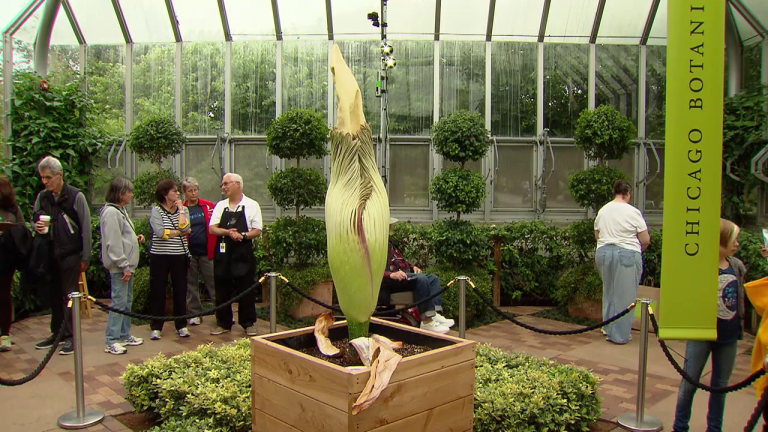A restaurant-worthy mushroom was identified by researchers from the Field Museum and Chicago Botanic Garden. Meet the Chicago chanterelle.
Chicago Botanic Garden
Picking and eating wild mushrooms could result in a delectable treat or a deadly mistake. A fungi expert shares some helpful advice and tells us why picking mushrooms in city parks and your own neighborhood might not be the best idea.
Not all bugs found in vegetable and ornamental gardens are harmful to plants. In fact, some of them help get rid of common pests. Find out which make the "good" and "bad" lists.
The Chicago Botanic Garden's Eliza Fournier shares a bushel of recommendations to keep your garden healthy in the summer heat.
The giant corpse plant, a titan arum, is now in bloom. See what the plant looks like via the CBG's live stream, and find out about late hours for Tuesday night.
If all goes as planned, the Chicago Botanic Garden is about to get very stinky in the next few days. That’s because Sprout, a titan arum–also known as a corpse flower–is very close to blooming.
Their annual migration from North America to Mexico has been called “one of the most spectacular natural phenomena in the world,” but the monarch butterfly is not only in decline – it’s closer to extinction than previously thought, research shows.
You don't have to be an expert birder or ecologist to enjoy songs and calls from native and foreign birds in Chicago this time of year. Here's what to listen for.
The Chicago Botanic Garden has named Jean Franczyk as its new president and CEO. The South Side native returns to Chicago after working in London for 10 years. She joins “Chicago Tonight” to discuss her new role at the Chicago Botanic Garden.
It’s official: The first day of spring, March 20, is less than two weeks away. Chicago is gearing up for warmer weather and blossoming flowers with gardening and horticulture events in the area.
Despite the cold, there's plenty to do with your green thumb – even though it may be a little blue right now. Joining us with some winter gardening ideas and tips is Eliza Fournier of the Chicago Botanic Garden.
Alice, the famous smelly flower of the Chicago Botanic Garden, is bearing fruit – hundreds of them.
Birds not ordinarily found in Chicago visit the region during the winter to utilize natural – and man-made – resources.
There was no public countdown, no fanfare this time. And yet, a corpse flower is blooming – right now – at the Chicago Botanic Garden. Watch a livestream of the rare event.
We conduct a postmortem on Spike, the smelly corpse flower that failed to bloom at the Chicago Botanic Garden. What happened? Paris Schutz has the story.
After much anticipation, the Chicago Botanic Garden on Saturday night announced that Spike is not expected to bloom.

